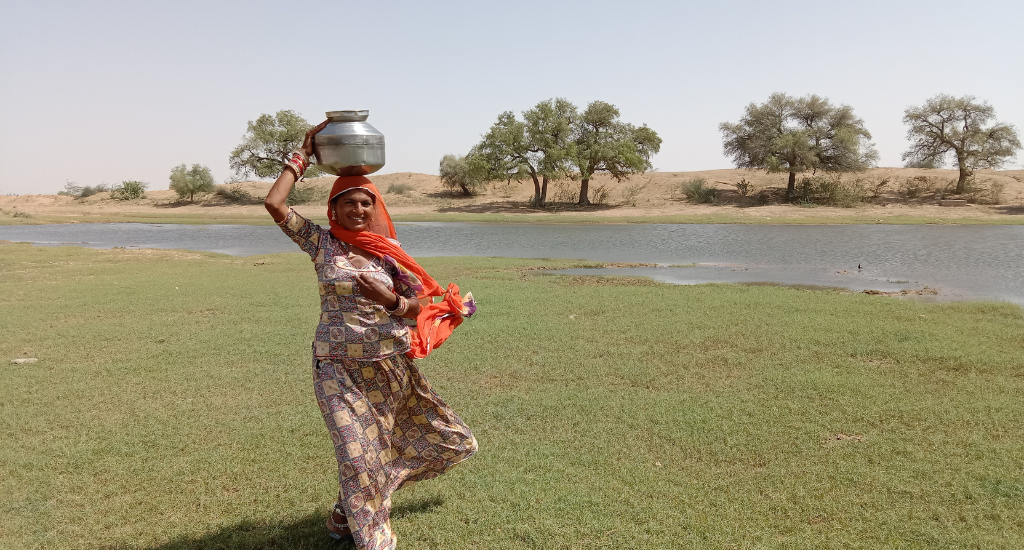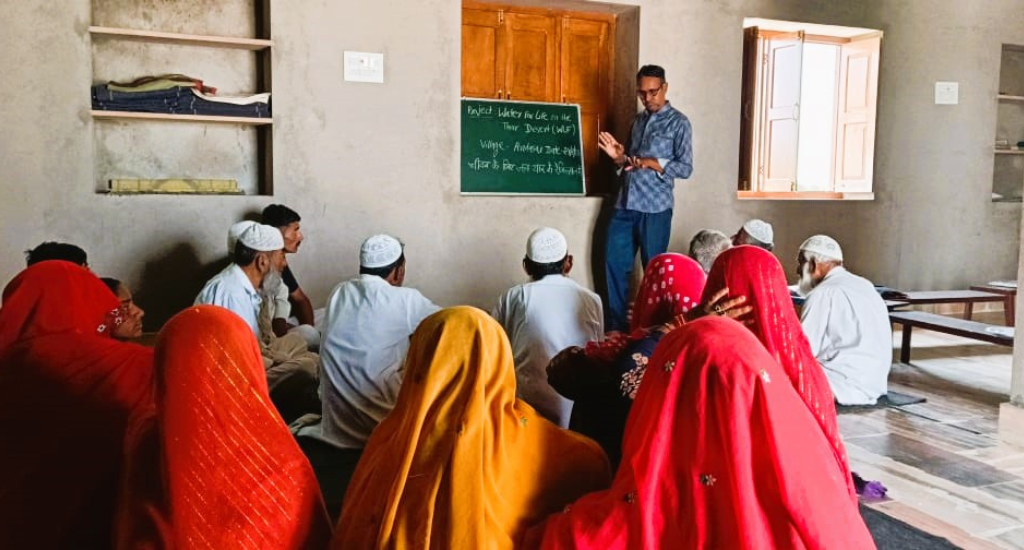
Thar villagers revive ponds to tackle water scarcity
Understanding the importance of traditional water sources for water security, villagers revive ponds that have kept the Thar desert communities water secure for generations.

Understanding the importance of traditional water sources for water security, villagers revive ponds that have kept the Thar desert communities water secure for generations.
With sand stretching for miles and with limited rainfall, people living in the Thar Desert have developed several methods of collecting and storing rainwater for household and agricultural use and for their livestock.
Naadi or pond is one such system that has helped the desert communities tackle water shortage. Every village has its own ponds, which are considered the most widespread and common source of water supply in the desert. While ponds fall into disrepair in most areas, some villages have taken the initiative to form a development committee to revive the ponds and ensure sustained water supply for everyone.
Depending on the geological conditions, a naadi can keep water for up to one year. But in the recent past people seem to have forgotten the importance of traditional water supply systems, and the villagers don’t make a conscious effort to maintain these ponds. These community water supply systems get polluted by human and cattle waste. They are also not de-silted regularly.

The resulting challenges are visible from the villagers’ complaints about water salinity and irregular supply of water through the public distribution system. In addition to this, tube wells are also responsible for the shrinking groundwater levels, making it more difficult for people to draw water from wells.
In such a scenario, it becomes important that the villagers, especially the youth, are made aware of the importance of the ponds and the need to maintain them, as time and again this traditional method has proven to be a sustainable means of ensuring water for the daily needs of communities.
Also Read: Rainwater Harvesting: How a parched village catches rain to prosper
To ensure that people rediscovered the advantages of ponds and kept them clean, some rules were formulated. These rules include a ban on activities like bathing, washing clothes and defecation in the pond and its catchment area, as well as filling of tankers and selling water, bathing cattle in the pond and cutting of trees around the water body. The rules also prohibit any encroachment in the catchment area.
An important role in enforcing the rules is played by the village development committee (VDC), a community-based people’s organisations established by Gramin Vikas Vigyan Samiti (GRAVIS) in every village that it works in. The VDC, formed by calling a meeting of the gram sabha in which all the villagers above 18 years participate, ensures participation of residents in implementing various community development activities and government programmes.

The committee has between 10 and 20 members represented by people of all castes, gender and ages. In addition to identifying development issues to work upon, the committee forms a village fund called gramkosh. Every household contributes a certain amount to the fund, which is then used for purposes such as public sanitation and maintenance of ponds.
Maintenance of ponds is an integral element of the VDC’s work towards ensuring efficient water resource management. The committee keeps a check on the pond and its catchment area. It also ensures that the pond is cleaned every year before the onset of monsoon. Trash, human waste and cattle droppings also need to be removed at regular intervals. The VDC levies a fine upon those found violating the rules.

The VDC also organises exercises like digging and de-siltation work to be done by the villagers. Depending on the level of silt accumulated, the villagers de-silt the pond every four to eight years. It’s done under the supervision of experts who know how much silt can be removed and if the bund slope must be improved, etc. In order to tackle the problem of evaporation, trees and shrubs are planted along the west side of the pond.
With the advent of technology, better solutions are available to deal with the problems associated with surface water resources for community consumption. Modern technologies must be tested to avoid seepage and evaporation, by establishing a prototype pond for which implementing agencies and stakeholders should come together to help with technology supplies, funding and implementation support.
Watch: The elderly are leading climate action in Thar

Advantages of ponds over public water supply are phenomenal if maintained properly. VDCs play a big role in not only spreading awareness in the community but also in taking responsibility towards conservation of natural water bodies so that the villages stay water secure.
The lead image at the top shows a woman carrying water from a restored water body. (Photo courtesy GRAVIS)
Krupa Gandhi is a communications professional currently working with GRAVIS as a consultant.